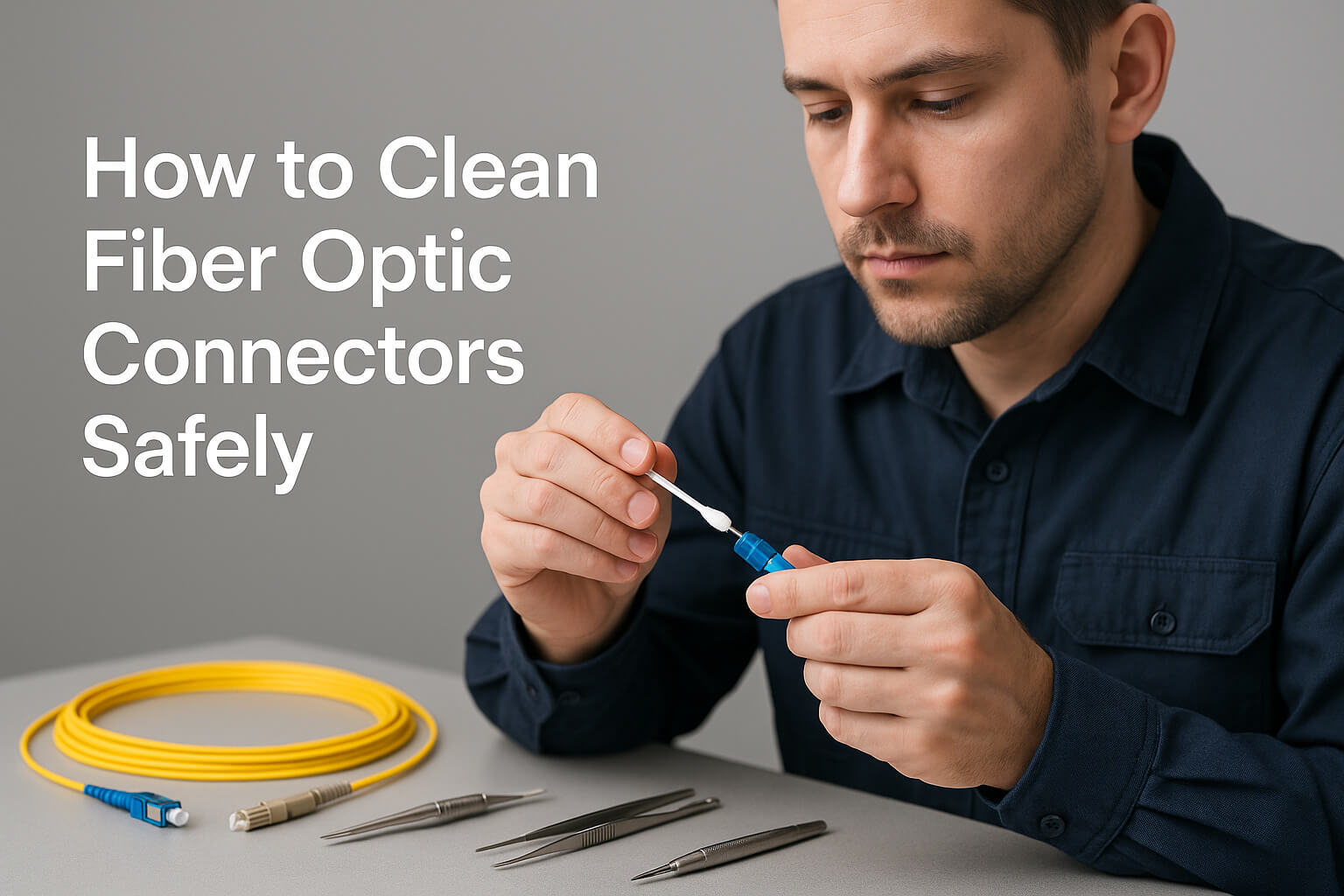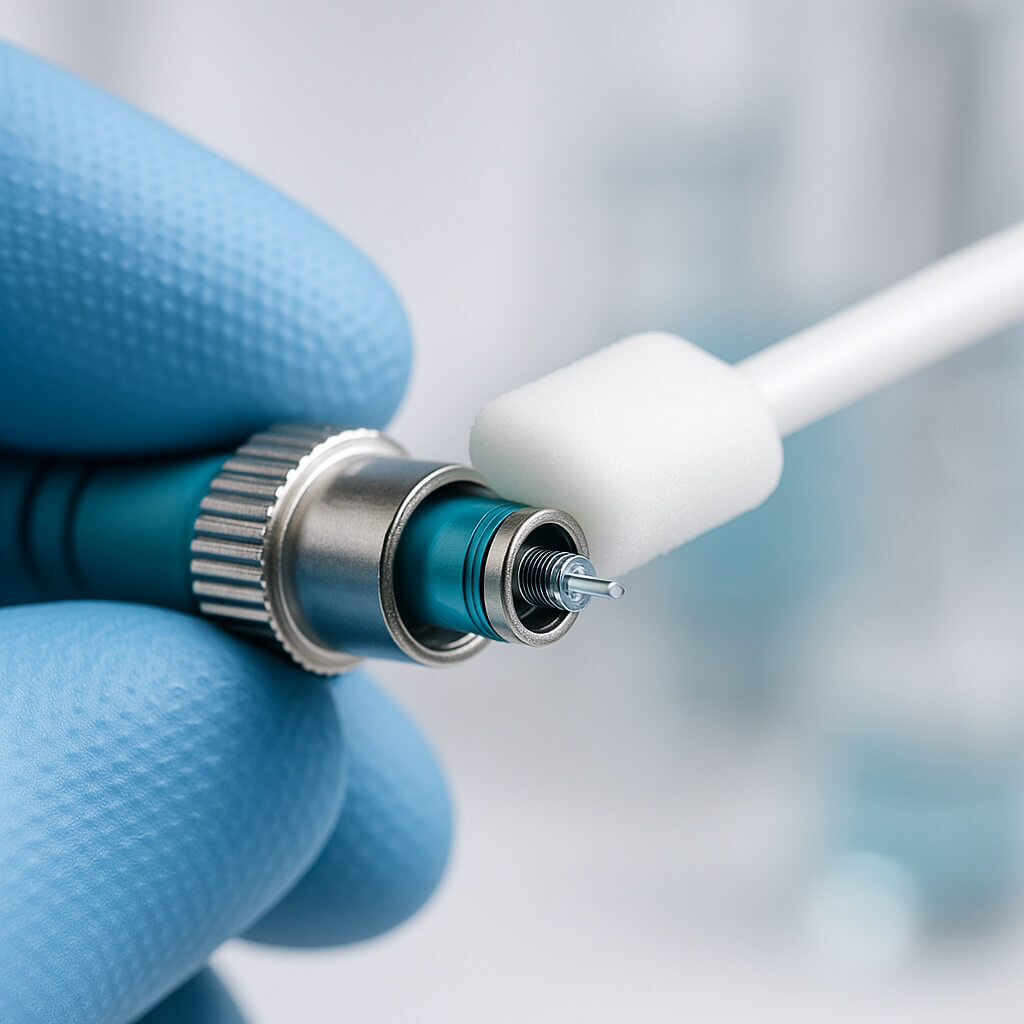How to Clean Fiber Optic Connectors Safely
Published by AllSwabs.com on Oct 06, 2025

Fiber optic connectors are the lifeline of modern data transmission systems—any dust, oil, or residue can cause signal loss or equipment failure. Whether you’re maintaining telecom lines, network systems, or laboratory instruments, knowing how to clean fiber optic connectors properly is essential to preserving signal integrity. In this guide, we’ll explain the right cleaning process and highlight the best fiber optic cleaning swabs to use for safe, residue-free results.
Why Proper Fiber Optic Cleaning Matters
Even microscopic contaminants can block light transmission through fiber optic interfaces. Dirt, oil, or moisture can increase insertion loss and reflectance, compromising performance. Improper cleaning can also scratch or permanently damage connectors, leading to costly repairs or replacements. Using the right cleaning method and tools is critical for maintaining system efficiency and longevity.
Common Mistakes to Avoid
- Using cotton swabs or tissues: These can shed fibers and leave lint behind.
- Using harsh solvents: Strong chemicals can damage delicate connector surfaces.
- Applying too much pressure: This may scratch ferrule end faces or misalign connector geometry.
- Reusing swabs: Always use a fresh swab for each connector to prevent cross-contamination.
The Correct Way to Clean Fiber Optic Connectors
Follow these steps for safe and effective cleaning:
- Power down equipment: Always disconnect and ensure cables are not live.
- Inspect the connector: Use a fiber inspection microscope to check for visible debris or oil.
- Use the right swab: Select a lint-free, ESD-safe fiber optic cleaning swab that fits the connector ferrule.
- Apply solvent (if required): Use a small amount of high-purity isopropyl alcohol or approved optical-grade cleaner on the swab tip.
- Clean with a single motion: Gently rotate or swipe the swab in one direction—never back and forth—to lift away debris.
- Dry and inspect again: Use a dry swab to remove residual solvent and recheck the connector before reconnecting.

Recommended Fiber Optic Cleaning Swabs
Using high-quality cleaning tools makes all the difference. AllSwabs.com offers lint-free swabs engineered specifically for optical maintenance:
- Coventry 48040 Fiber Optic Swab: Precision foam tip and static control handle designed for 2.5 mm connectors.
- Texwipe TX714A Fiber Optic Swab: Polyester tip resists fraying and minimizes particle shedding.
- Puritan Foam-Tipped Swabs: Ideal for cleaning connectors in confined housings and sleeves.
Explore our full selection of fiber optic swabs to find the best fit for your specific connectors and maintenance environment.
Other Types of Swabs You Should Know
Fiber optic cleaning is just one of many precision applications where swab type matters. Learn more about the differences between foam, polyester, cotton, and specialty swabs in our detailed guide, Types of Swabs.
Final Tips for Damage-Free Cleaning
- Always clean both ends of a connector pair before mating.
- Store connectors in dust caps when not in use.
- Maintain a clean workspace to prevent contamination during handling.
With proper care and the right tools, fiber optic connectors can maintain peak performance for years. Trust AllSwabs.com for high-quality fiber optic cleaning swabs engineered for precision and reliability.
Conclusion
Cleaning fiber optic connectors doesn’t have to be complicated—just precise. Avoid damage and performance loss by choosing the correct lint-free swabs and following a consistent cleaning routine. Browse our Fiber Optic Swabs today to keep your systems operating at their best.
